Submitted by WA Contents
Farming Architects' wooden skeleton provides library space for children and cage for chickens
Vietnam Architecture News - Jan 09, 2019 - 05:23 38344 views
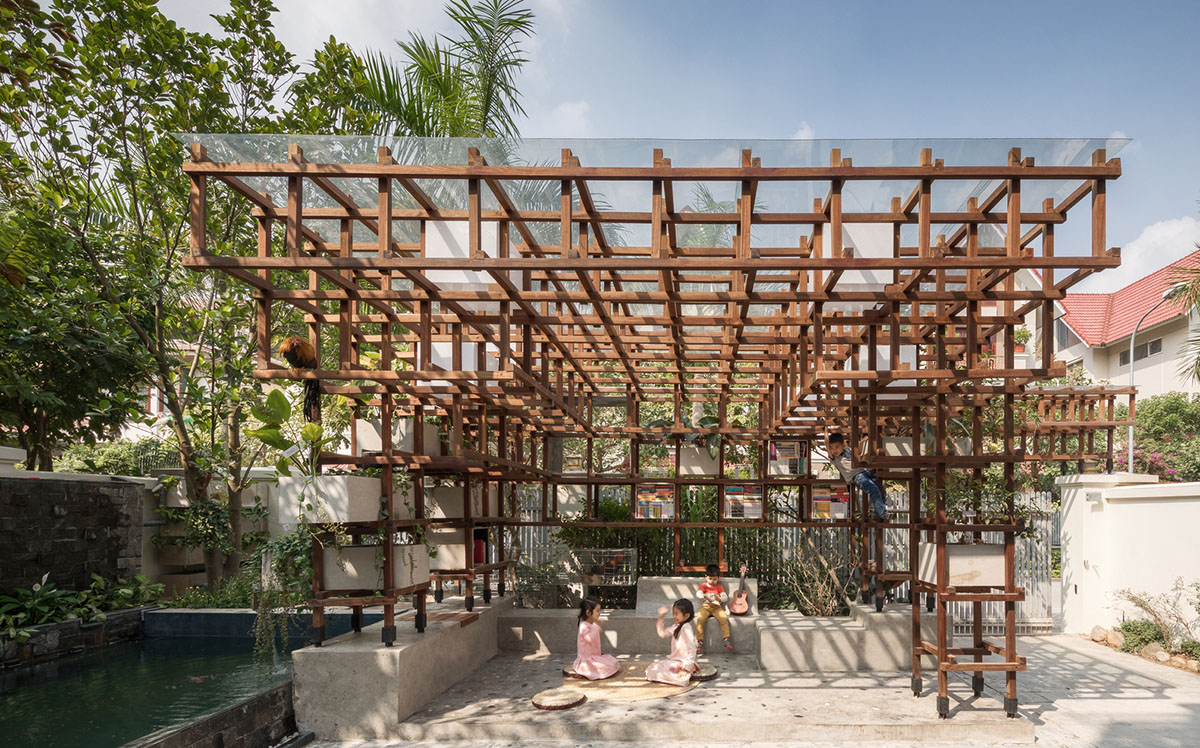
Vietnamese architecture practice Farming Architects has designed a wooden structural lattice, providing a library space for children and a cage for chickens in Hà Nội, capital and second largest city of Vietnam.
The library is conceived as a special project that carries the traditional Vietnamese horticulture, aquaculture & animal husbandry, from rural to urban areas.
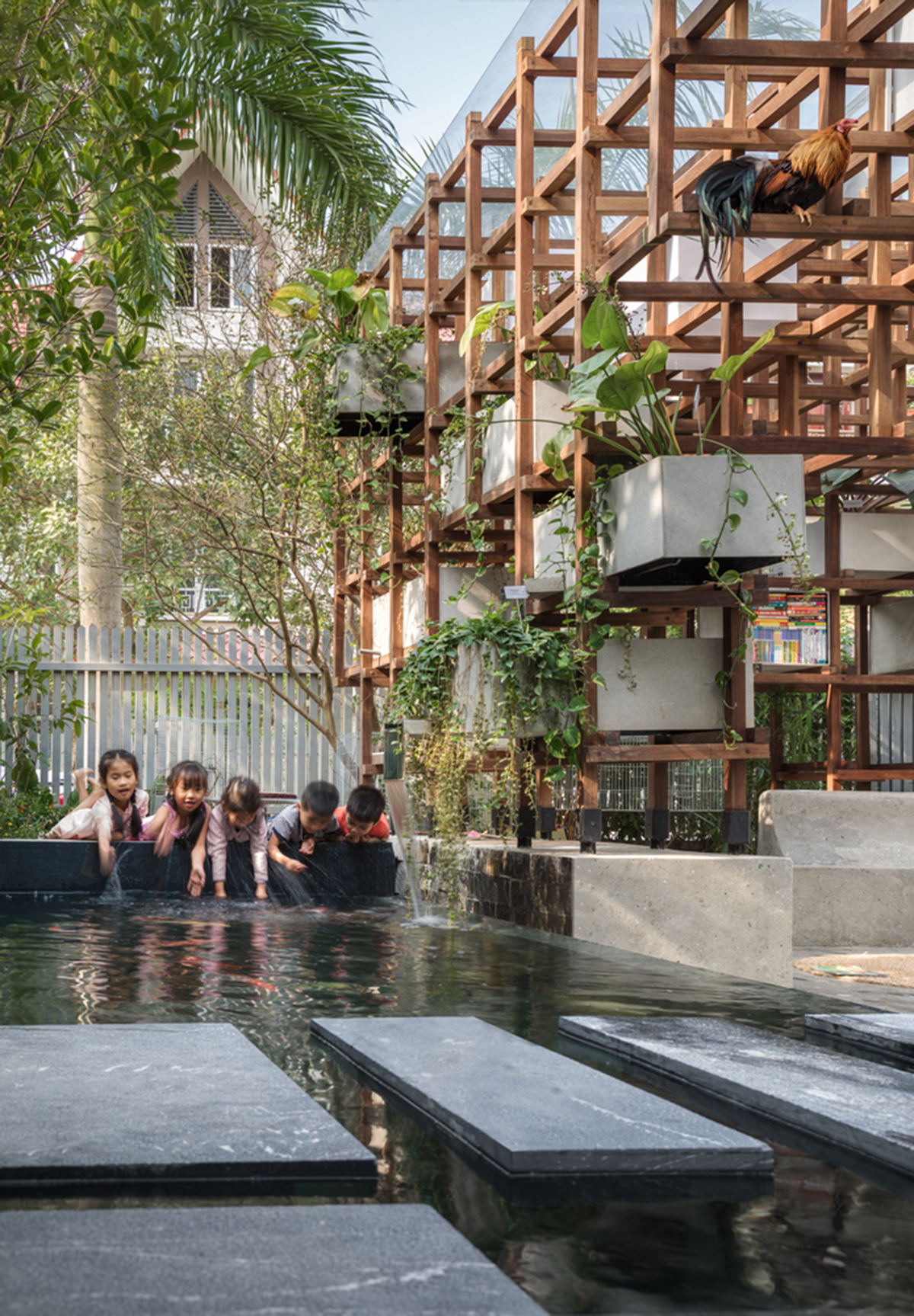
Named Vac-Library, the project, covering a 55-square-metre area, reinterpreted the VAC system in architecture to be implemented in an urban area. VAC system in Vietnamese words: Vườn (Garden), Ao (Pond), Chuồng (Cage), an integrated production systems in the rural areas comprising three components: horticulture, aquaculture & animal husbandry.
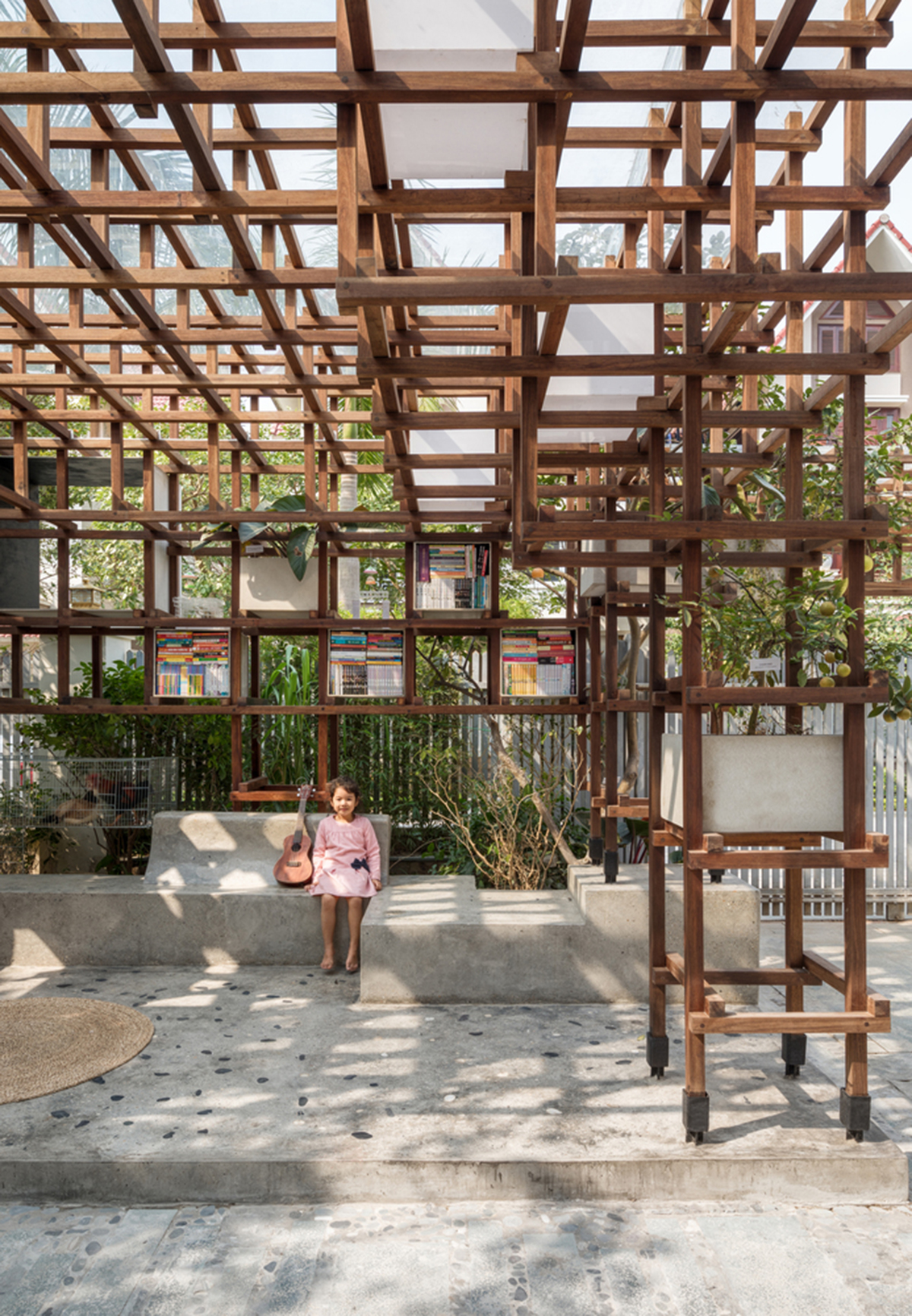
VAC systems, therefore, effectively use all the available energy from land, air, water and solar energy resources, and also effectively recycled generating products and waste.
The architects' aim is not only to produce aneffective use of natural resources but also favourite experimentation in using different types of plants and animals in urban environment.
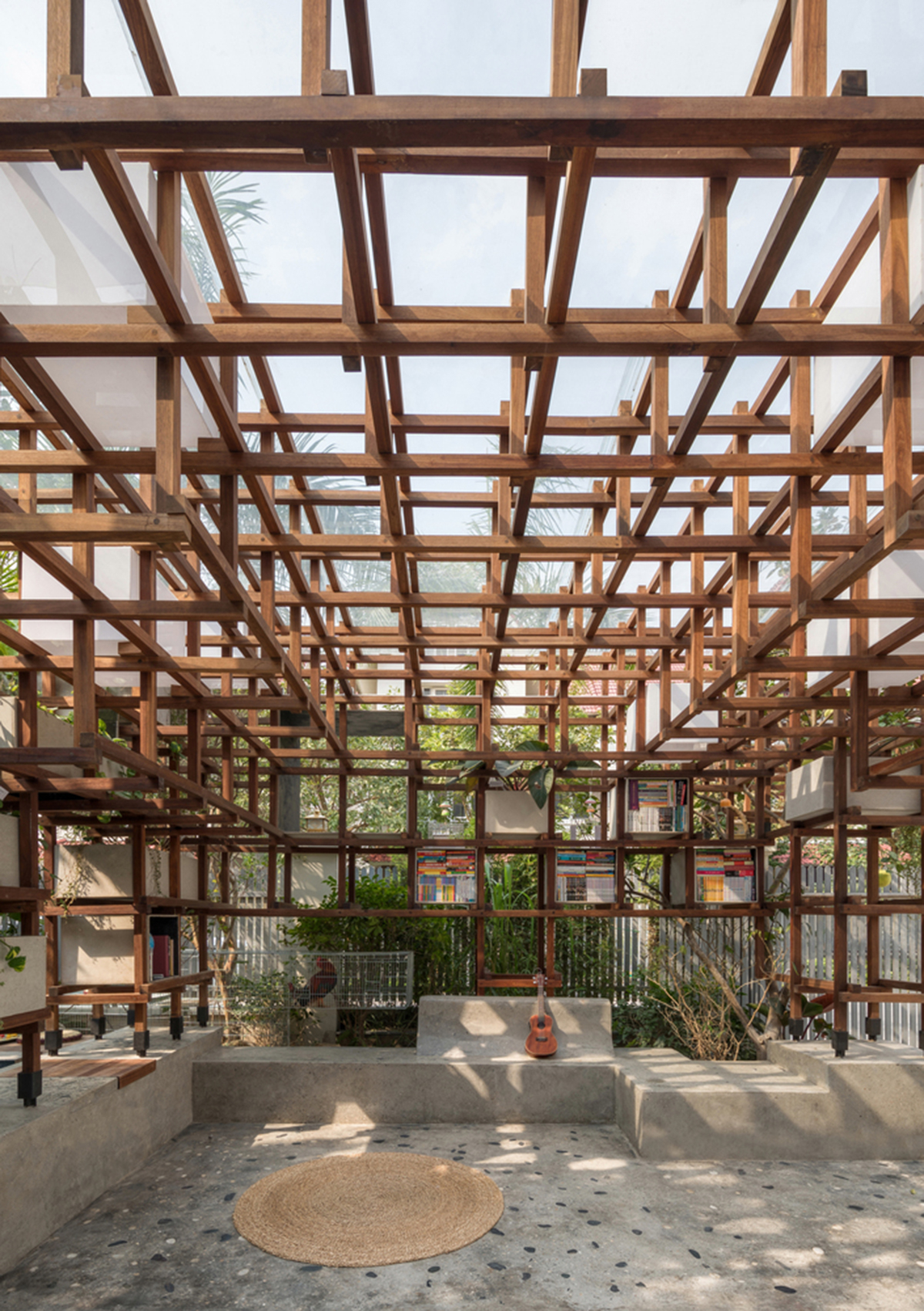
"The core feature for the design of VAC is the Aquaponics, it is a system that combines conventional aquaculture (raising aquatic animals) with hydroponics (cultivating plants in water) in a symbiotic environment," said Farming Architects.
"Aquaponics uses circulating water from fish pond to provide nutrients to plants. Nitrite / nitrite bacterium will transfer thewaste from the aquarium into a suitable nutrient-rich crop for plants. Water is also purified by plants and supplied to the aquarium."
"The system is designed with energy conservation in mind, using renewable energy (by transtering solar energy) and a reduced number of pumps by letting the water flow downwards naturally as much as possible.Beside, electricity for lighting and pumps are also provided - saved from solar panels on roof," explained the architects.
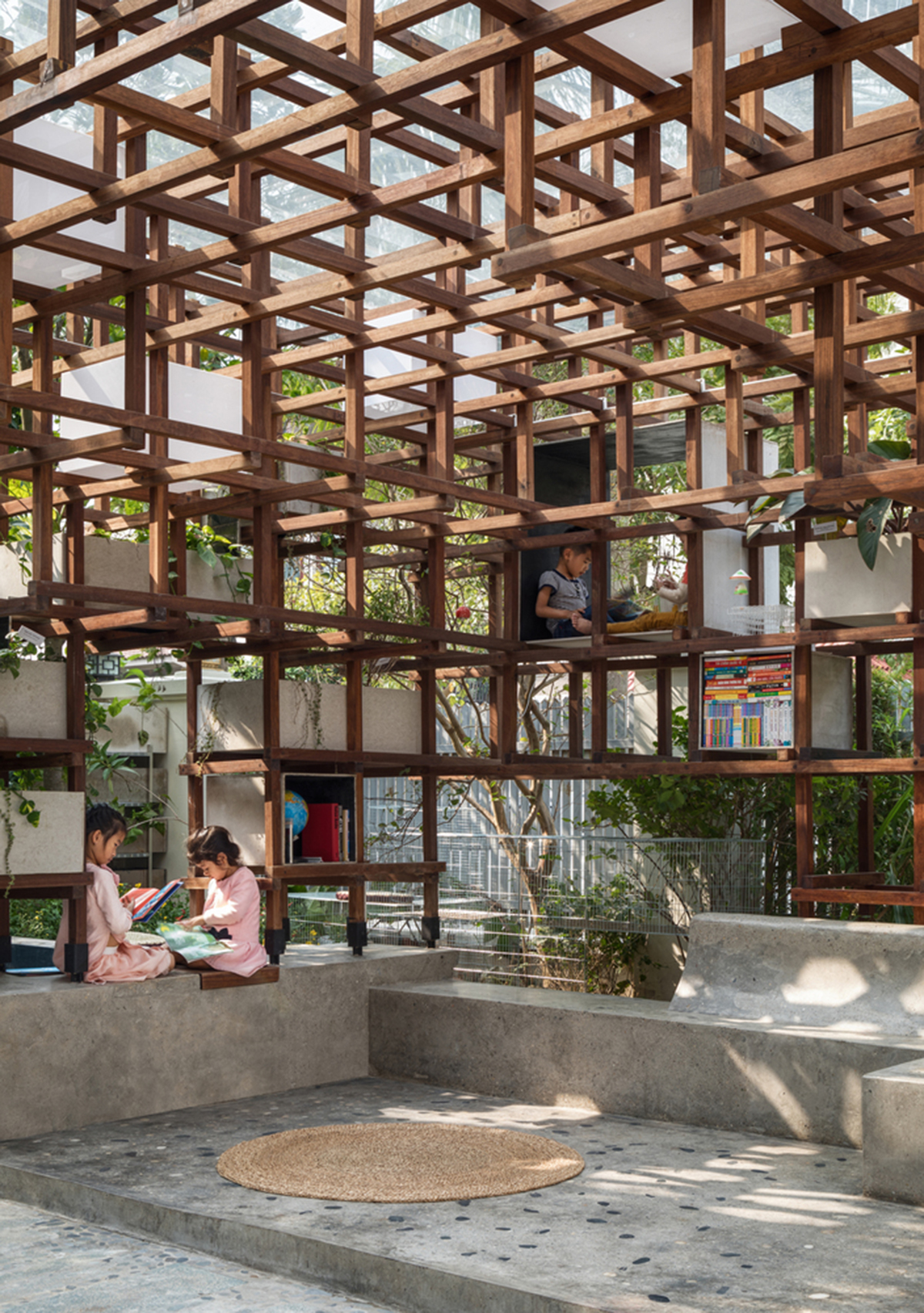
Regarding the context, the architects explain that in present-day Hanoi, Vietnam, people tend to create small landmarks in their homes, including the placement of fish ponds, which may be small aquariums or Koi ponds with higher investment.
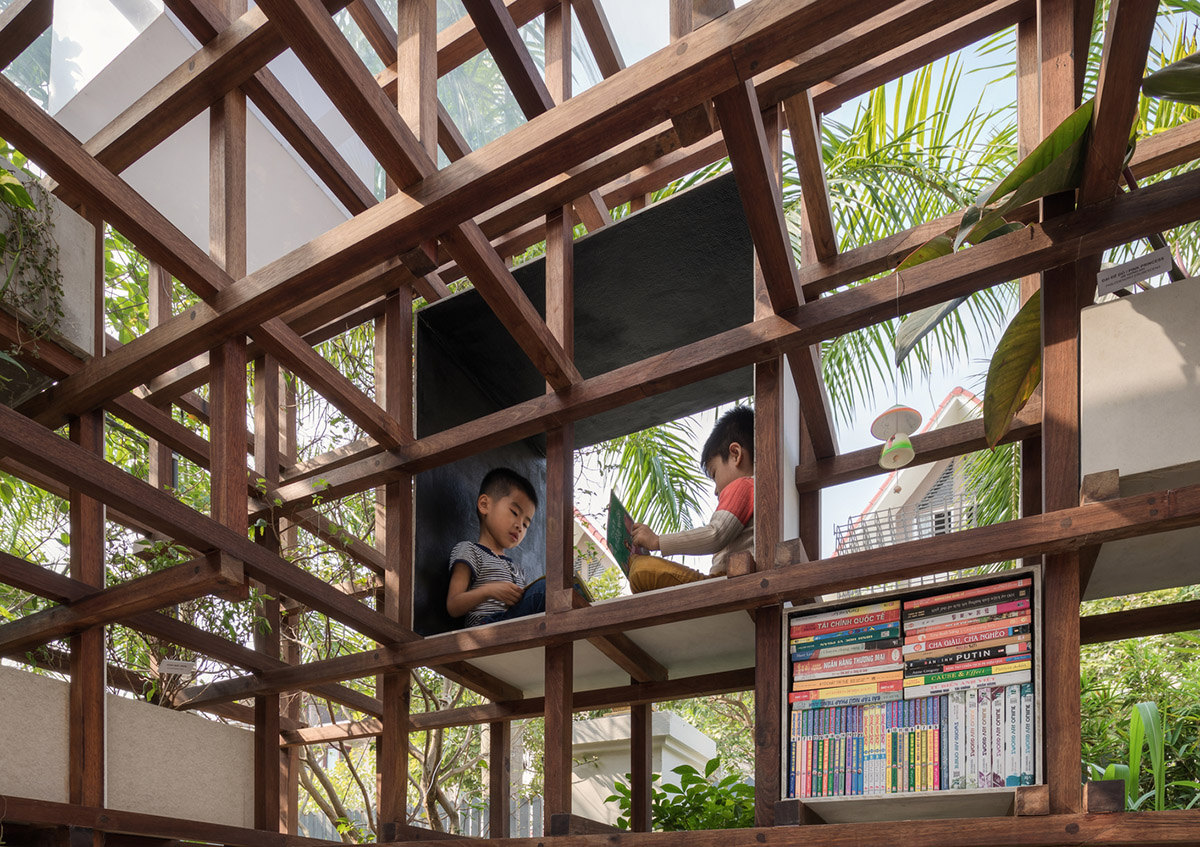
In addition, the situation of vegetable contaminants in the city also causes the desire to plant fresh vegetables right in resident homes became imperative.
Nowadays, many families organize planting vegetable at home, however, mostly following to spontaneous methods, without a strategic planning or architectural aesthetics. These are vegetable foamboxes that are placed in a narrow space in the house, or in the garden area of the balcony and top terrace.
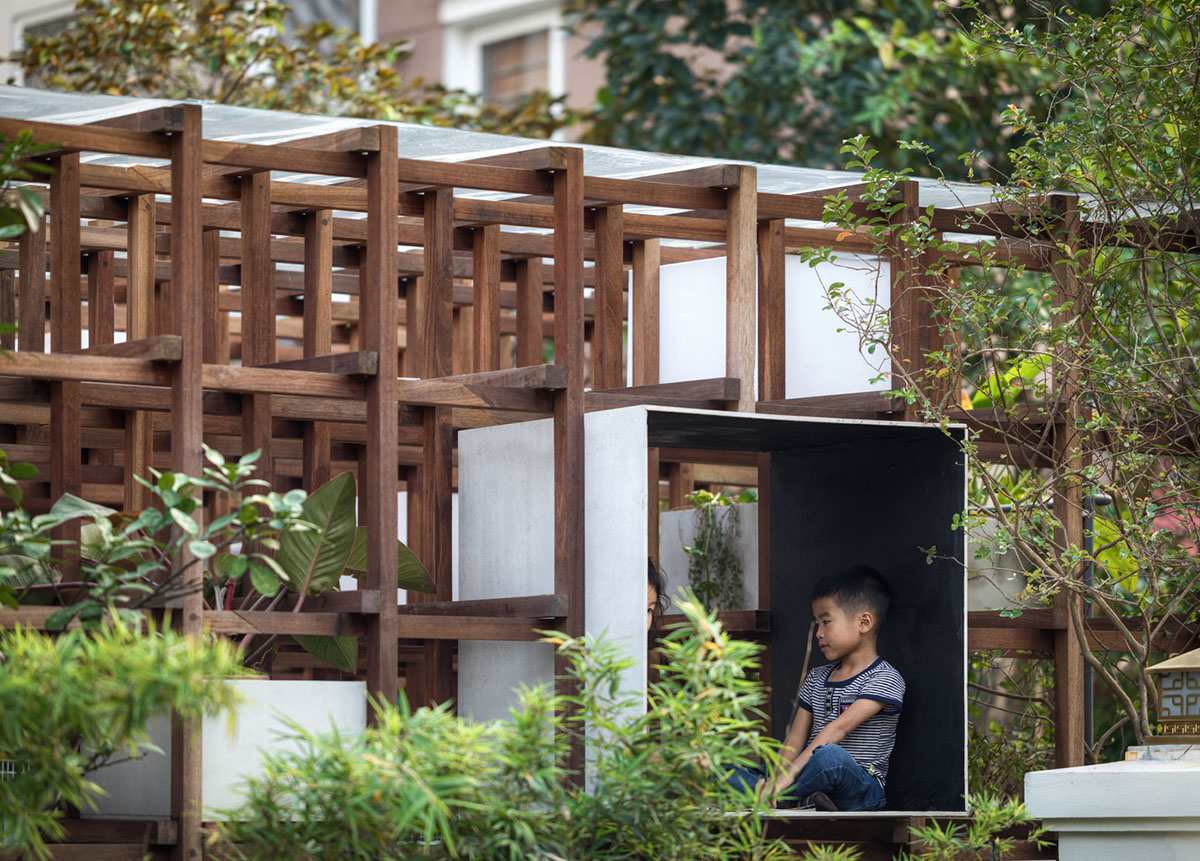
VAC Library uses a language deriving from the use wooden frames. This technical form helps to create a flexible and adaptable structure. This also works as spatial organization, division to be different function areas.
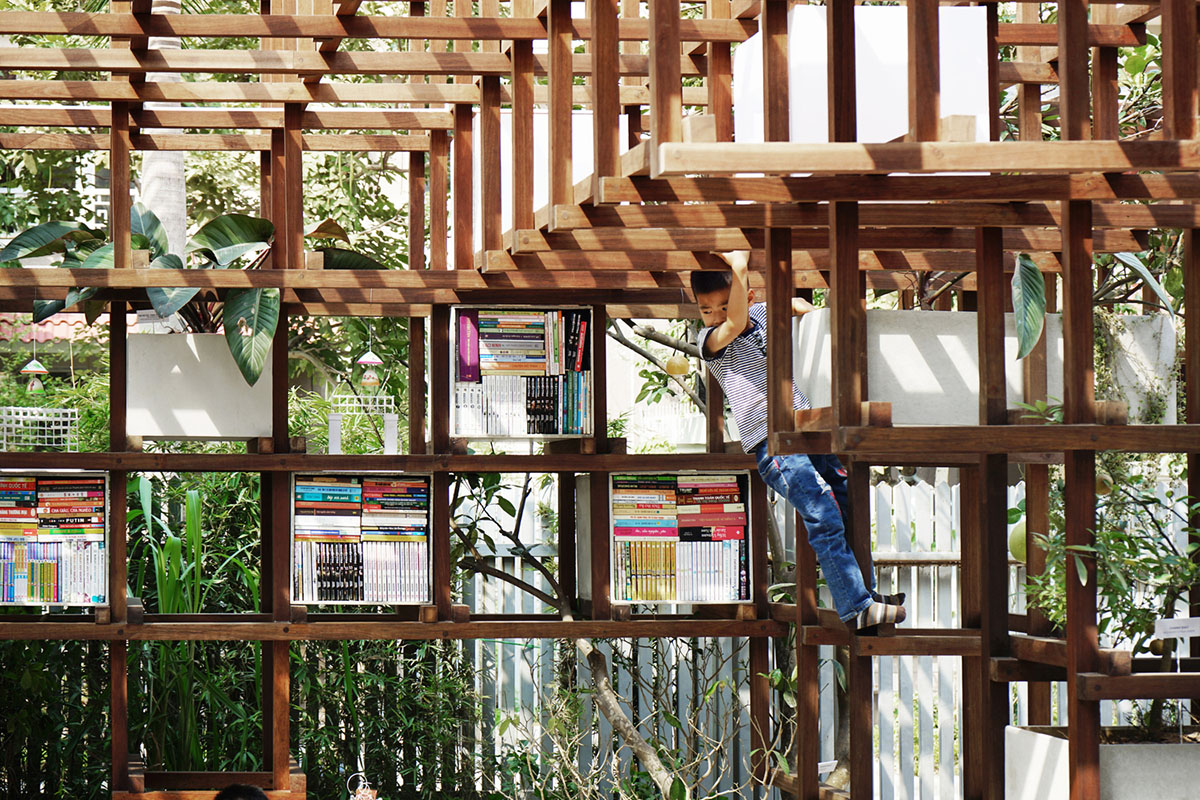
The Vac-Library is also geared towards an open library space for children. Children in the area and elsewhere can come here to play together, read books, and learn about this ecological model visually at the building.
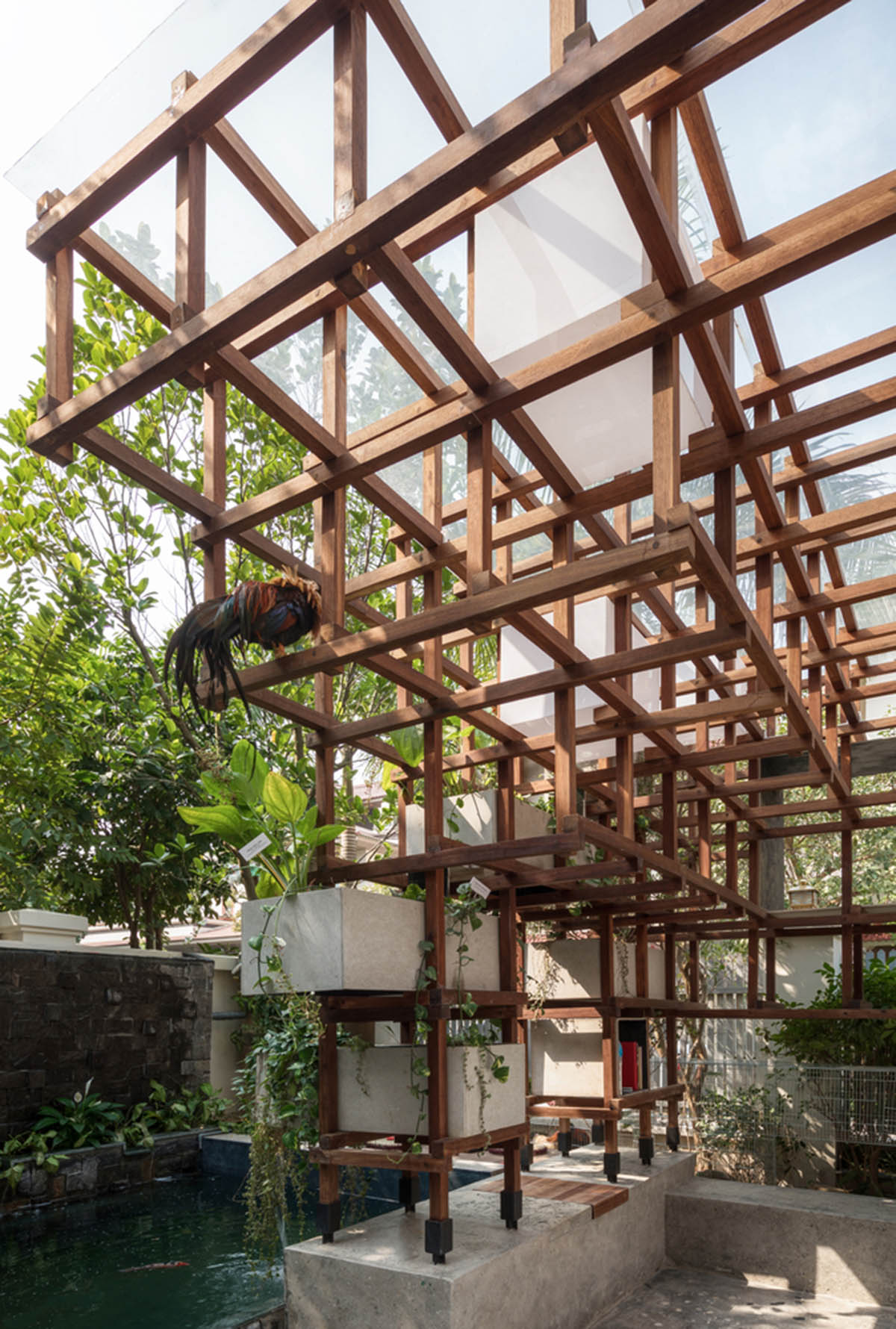
The children will know that Koi fish is not only pets to watch, but also know how their waste will be carried on the vegetable planters, how the water is supplied to the vegetables and then filtered back to the pond. The chickens which are raised in that cage beside will lay eggs and serve for meals, their excrement is also good for gardening.
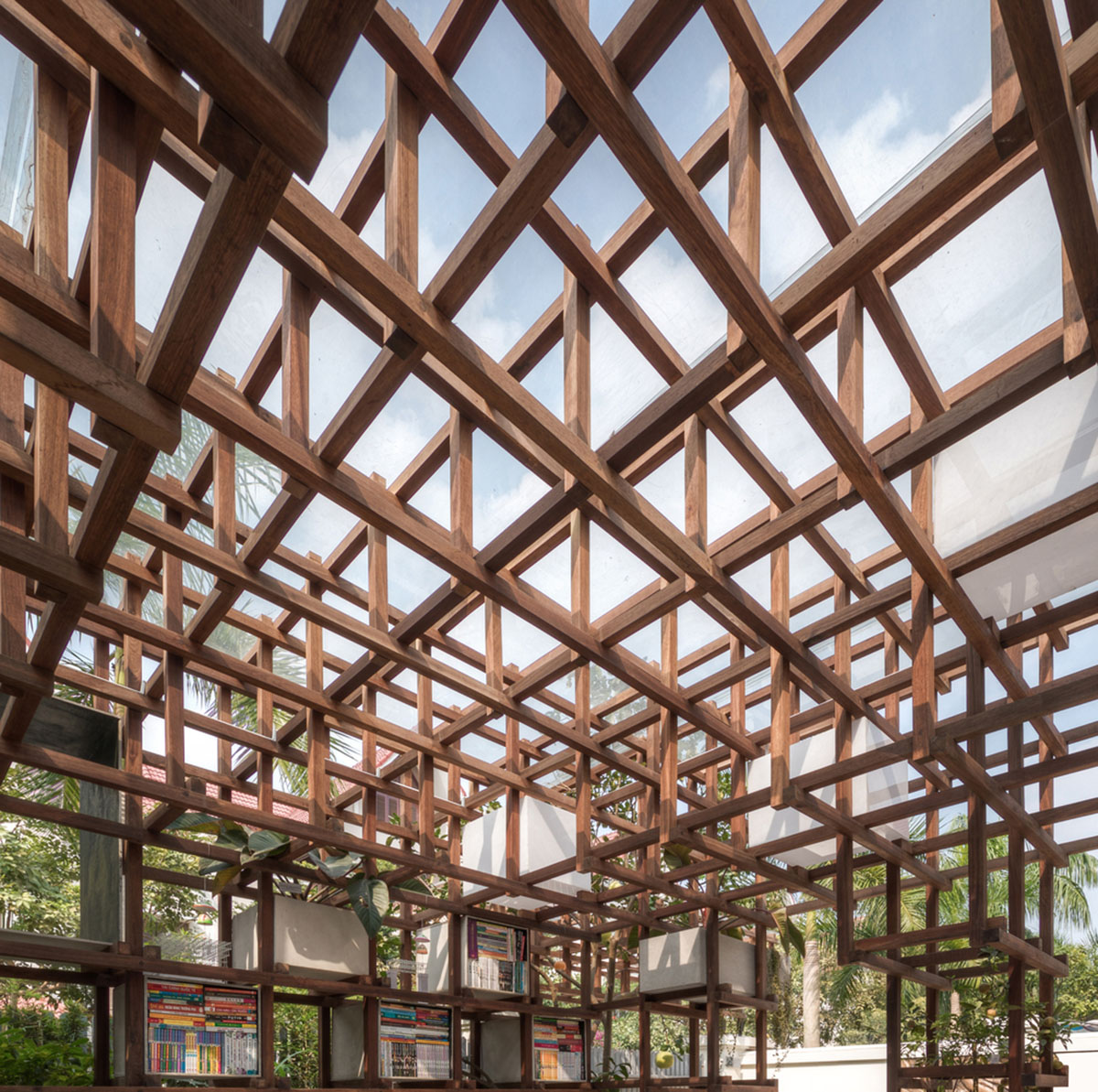
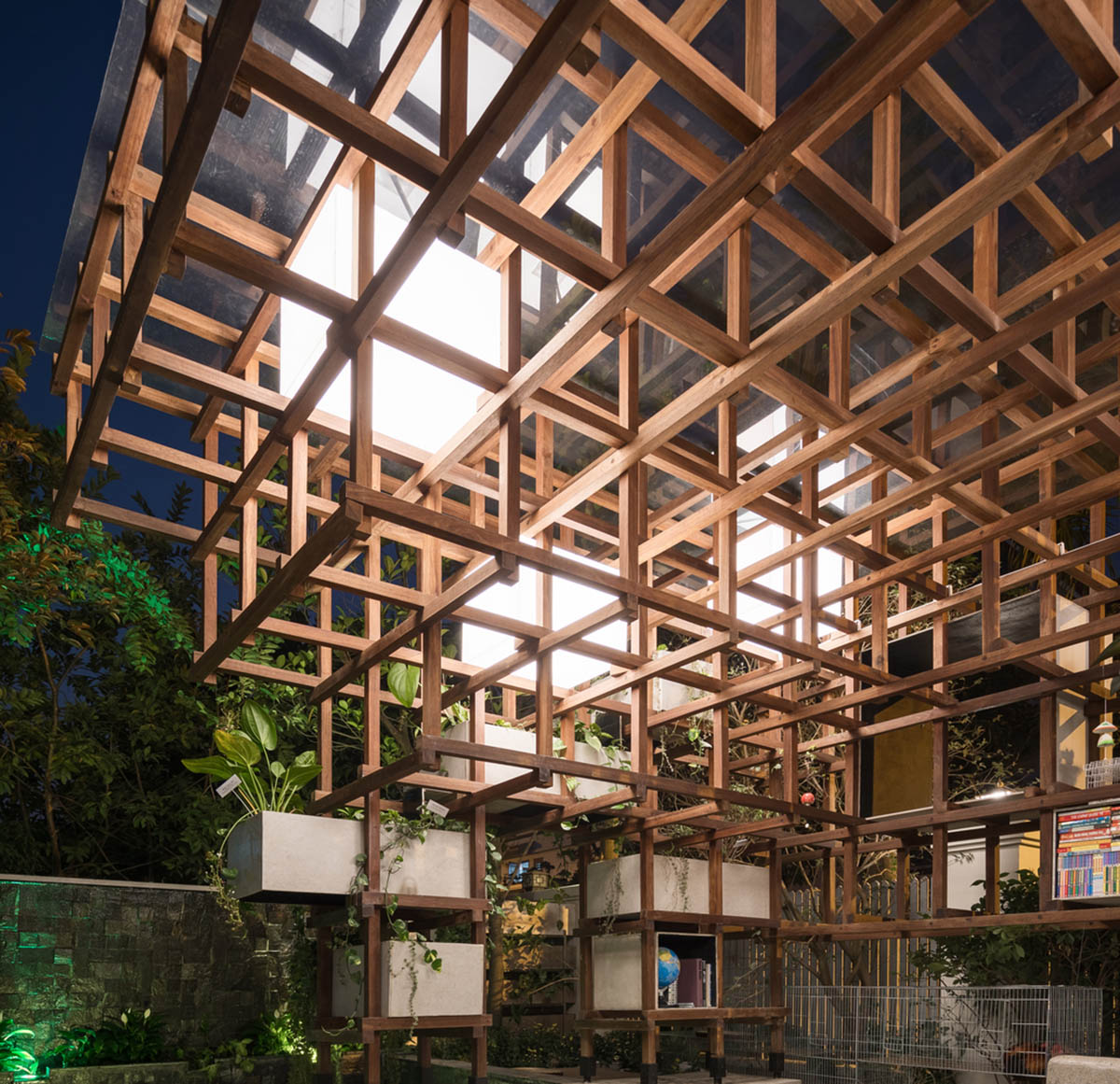
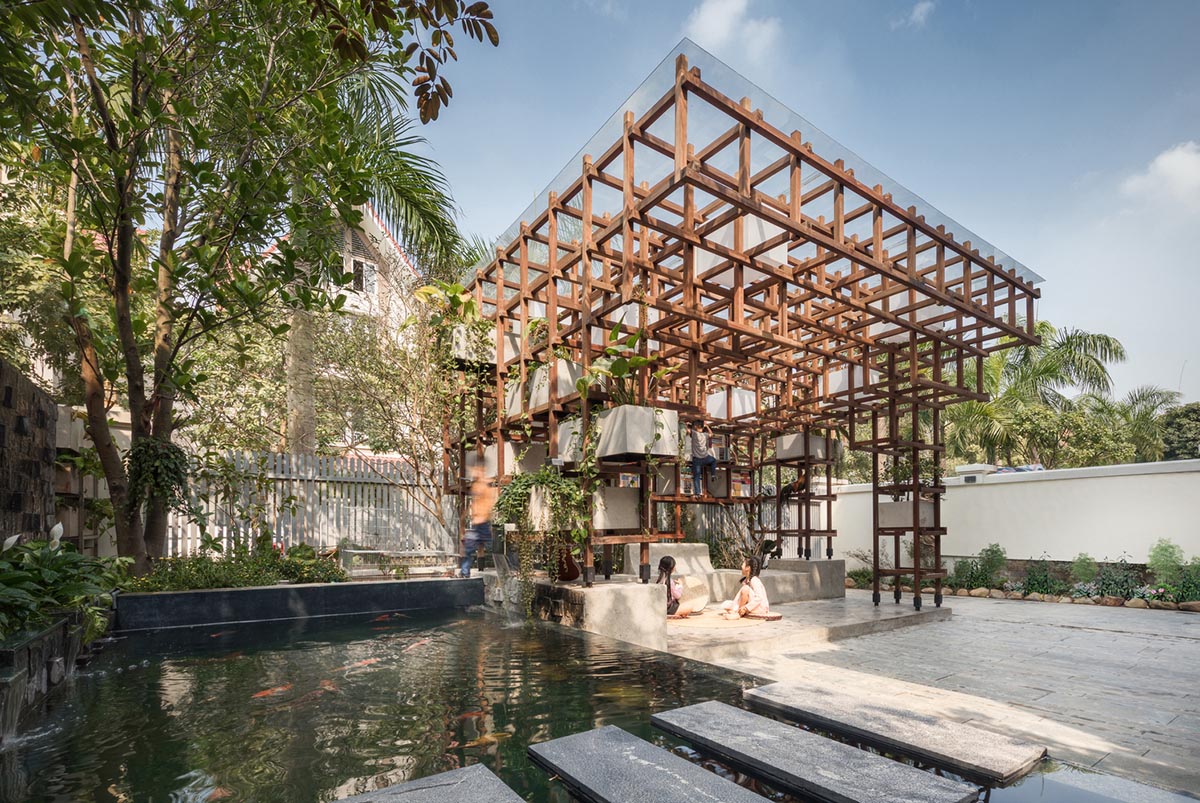
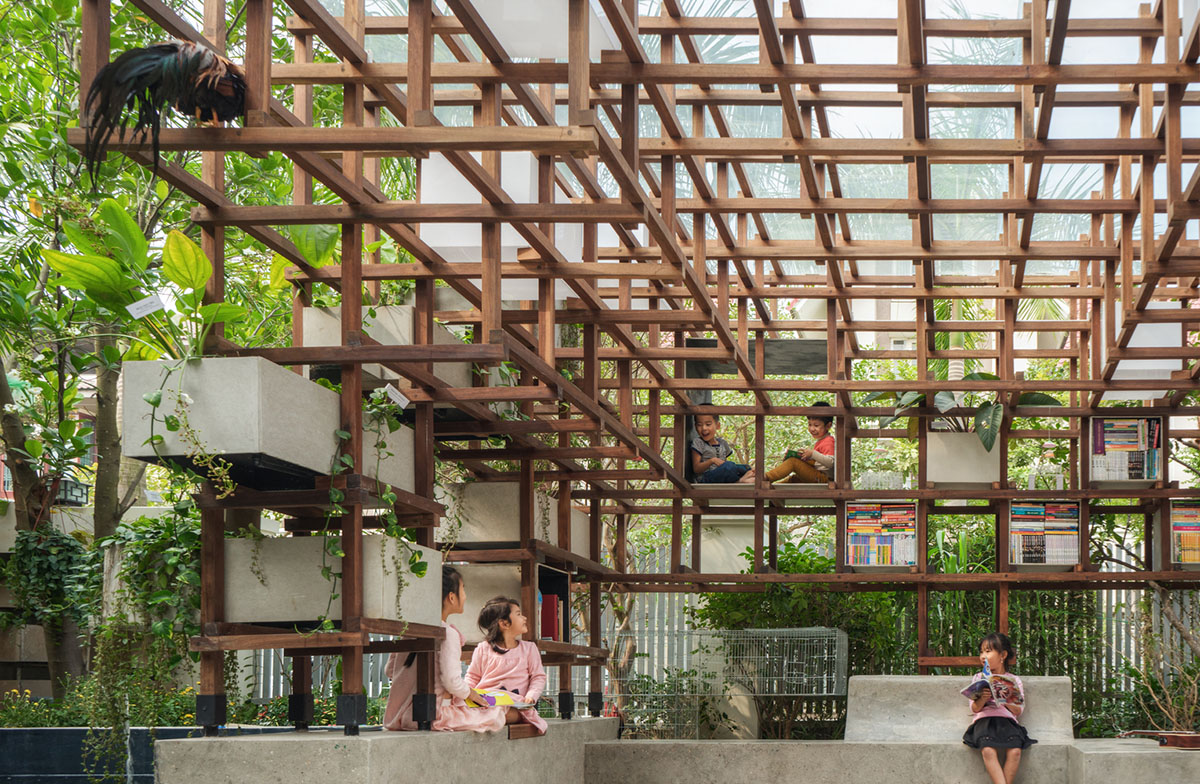
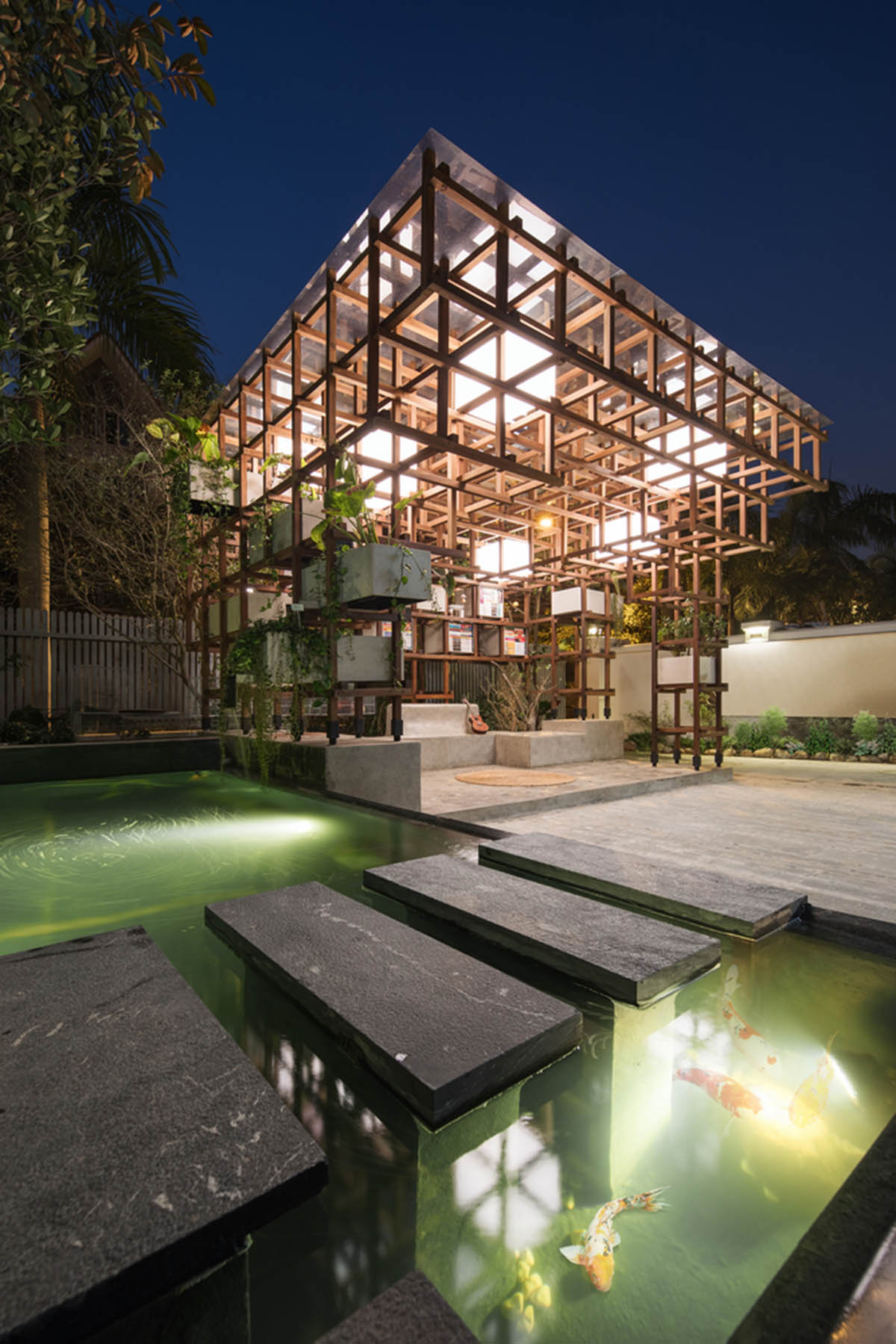
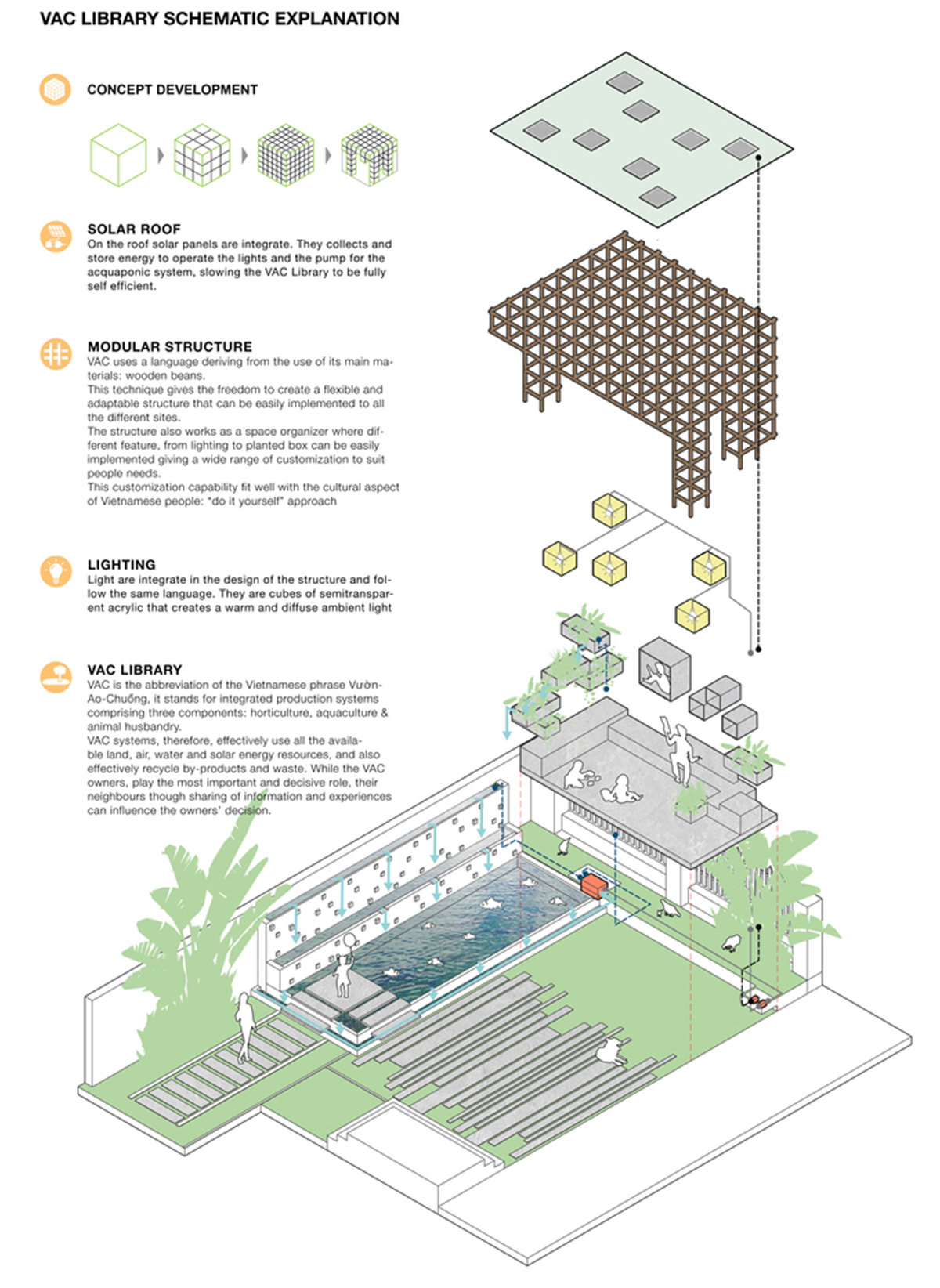
Schematic design of Vac-Library

Section
All images © Thai Thach, Viet Dung An
> via Farming Architects
